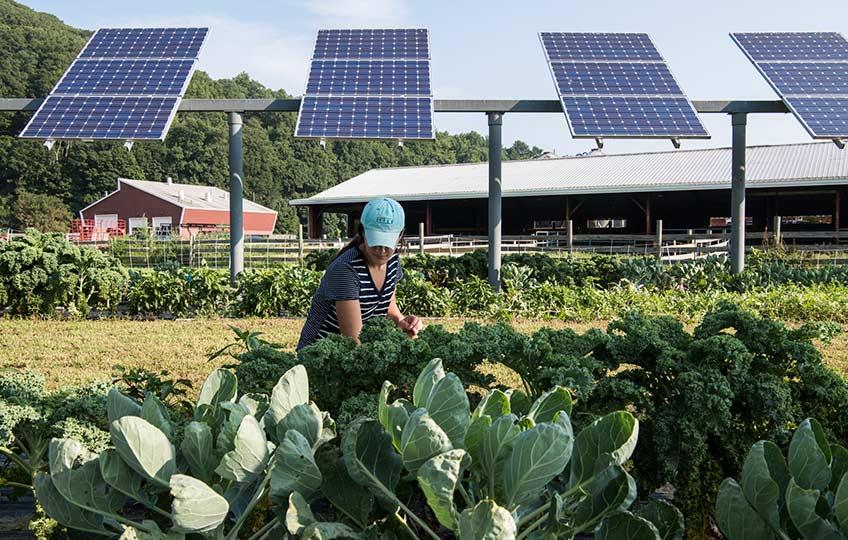Ecocentricity Blog: Walking and Chewing Gum
By: John A. Lanier

Ecocentricity Blog: Walking and Chewing Gum
“Nature abhors a monoculture.” It’s a line that I have heard Will Harris of White Oak Pastures use several times. Will has an incredible story, and you can read an awesome version of it on The Bitter Southerner’s site, but for now I want to focus on his quote.
Factually, Will is correct. Monocultures, meaning ecosystems entirely oriented around a single species, do not exist in nature. They are a human invention rooted in the dawn of agriculture 12,000 years ago, but modernized and taken to extremes with the recent advent of industrial agriculture. Picture a field of corn in the Midwest that extends as far as the eye can see. Literally, miles and miles of corn, and only corn. To Mother Nature, that would be super weird.
Our monocultures have been really good at doing exactly what they are designed to do – produce crops we can use in the short term (whether food or materials like lumber). But that’s not nature’s goal. Ecosystems instead optimize for diversity, which then yields long-term resilience in the form of healthy soils, abundant and varied food sources for all resident species, natural limits to excessive population growth, and opportunities for inter-species collaboration. They meet the needs of both the current generation of life forms as well as the needs of future generations. In other words, nature multi-tasks, while humans and their monocultures do not.
I realized recently that the human tendency toward monocultures extends beyond just agriculture. Instead of that field of corn, now picture acres of solar panels with nothing but gravel or turf grass underneath. Sure, photovoltaics aren’t organic lifeforms, but the lack of multi-tasking is just as apparent.
Don’t get me wrong – I’m a huge advocate for utility-scale solar. That doesn’t mean, however, that I think we’re doing it perfectly right now. In many parts of America, farmers are making a tough choice between continuing to farm land as they’ve done for generations or sell that land to solar developers and utilities. Maybe, just maybe, we can have our cake and eat it to?
Good news! I saw a recent and promising article from our country’s National Renewable Energy Laboratory about low-impact solar. This form of solar installation preserves the topsoil of the land, rather than stripping it away before leveling the site for the panels. It means the ground under the panels can be planted with pollinator-friendly plants that don’t need full and direct sunlight. The benefits are varied, from increased rainfall retention by the land to carbon sequestration to more abundant pollinators for nearby agricultural land to reduced maintenance costs resulting from less mowing. In some cases, the plants underneath can even increase the efficiency of the solar arrays by lowering the ambient temperature. There are even pilots in some places of “agrivoltaics,” which is the planting of food crops that don’t need full sunlight underneath the panels.
Low-impact solar is taking root (pun!) in more and more places, but I’m most proud of the example right here in my home state of Georgia. Our good friends at The Ray led the effort to get a one-megawatt solar array installed in the right-of-way at Exit 14 of I-85. A portion of that installation has pollinator-friendly plantings, with the goal that all 2600 panels will be pollinator-friendly after this pilot. It’s the first of its kind in the southeast, and I’m incredibly proud of their leadership, ingenuity, and multitasking!
This blog is available weekly via email subscription. Click here to subscribe.

